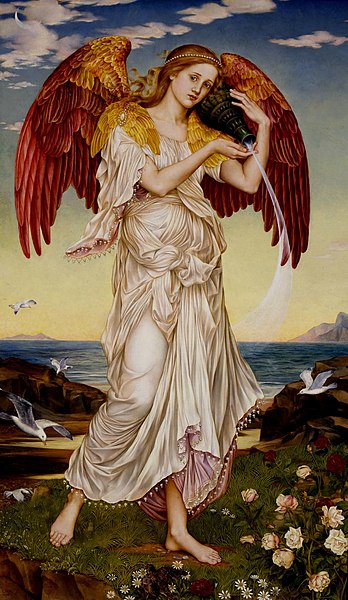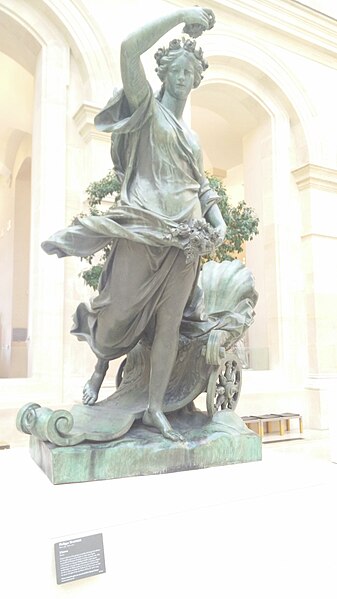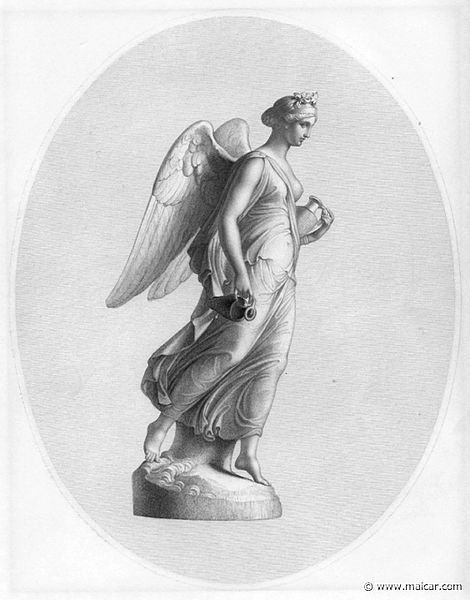In Greek mythology, Tithonus was the lover of Eos, Goddess of the Dawn. He was a prince of Troy, the son of King Laomedon by the Naiad Strymo (Στρυμώ). The mythology reflected by the fifth-century vase-painters of Athens envisaged Tithonus as a rhapsode, as attested by the lyre in his hand, on an oinochoe of the Achilles Painter, circa 470–460 BC.
Attic red-figure kylix with Eos and Tithonus, 5th century BC (Museum of Fine Arts, Boston)
Eos pursues the reluctant Tithonus, who holds a lyre, on an Attic oinochoe of the Achilles Painter, c. 470–460 BC (Louvre).
In ancient Greek mythology and religion, Eos is the goddess and personification of the dawn, who rose each morning from her home at the edge of the river Oceanus to deliver light and disperse the night. In Greek tradition and poetry, she is characterized as a goddess with a great sexual appetite, who took numerous lovers for her own satisfaction and bore them several children. Like her Roman counterpart Aurora and Rigvedic Ushas, Eos continues the name of an earlier Indo-European dawn goddess, Hausos. Eos, or her earlier Proto-Indo-European (PIE) ancestor, also shares several elements with the love goddess Aphrodite, perhaps signifying Eos's influence on her or otherwise a common origin for the two goddesses. In surviving tradition, Aphrodite is the culprit behind Eos' numerous love affairs, having cursed the goddess with insatiable lust for mortal men.
The Gates of Dawn, by Herbert James Draper
Eos by Evelyn De Morgan (1895)
L' Aurore, 1693 bronze statue of Eos by Philippe Magnier (1647-1715), on display at Louvre Museum, France.
Eos, Sig. Guglielmi's drawing of a statue of Aurora by John Gibson (1790-1866).






